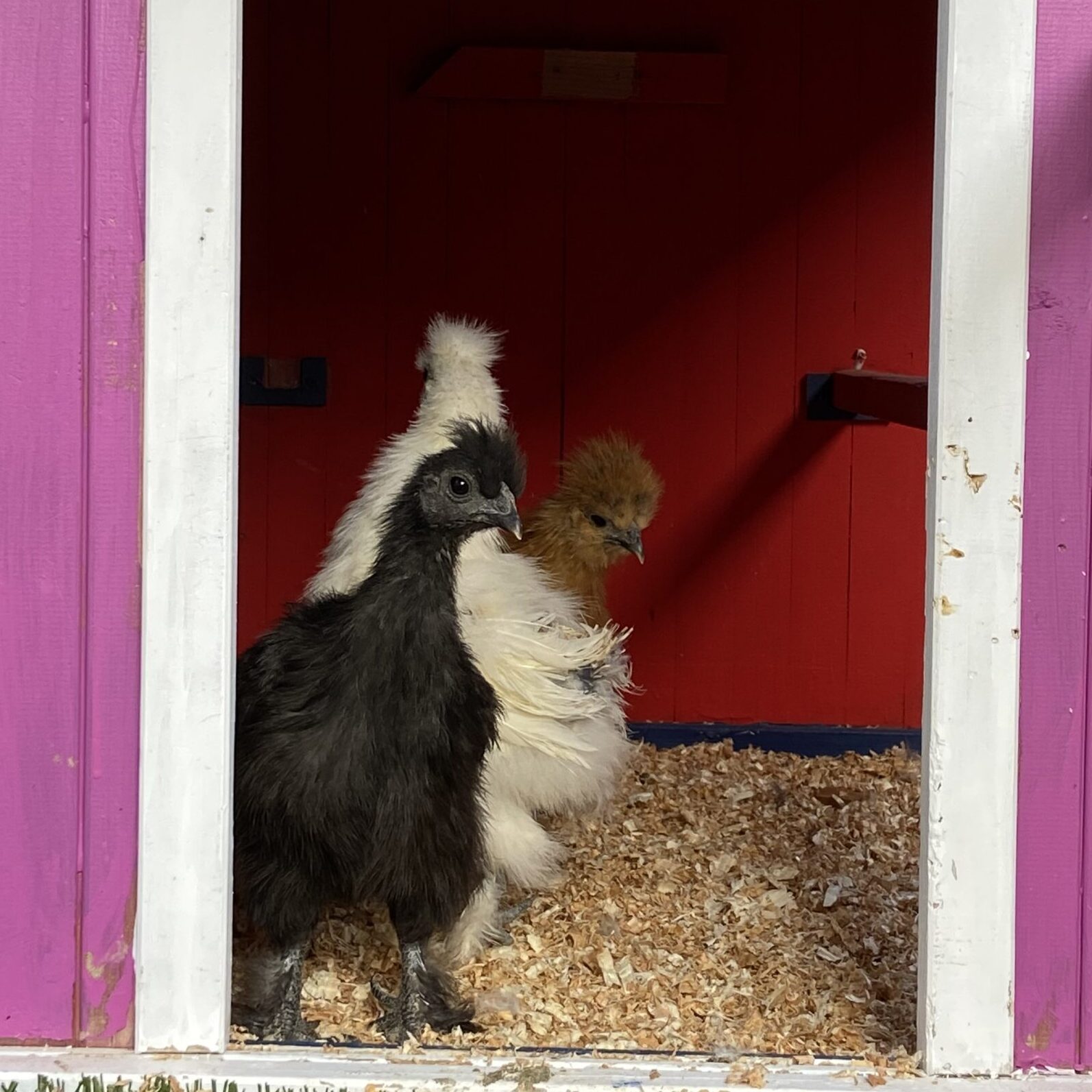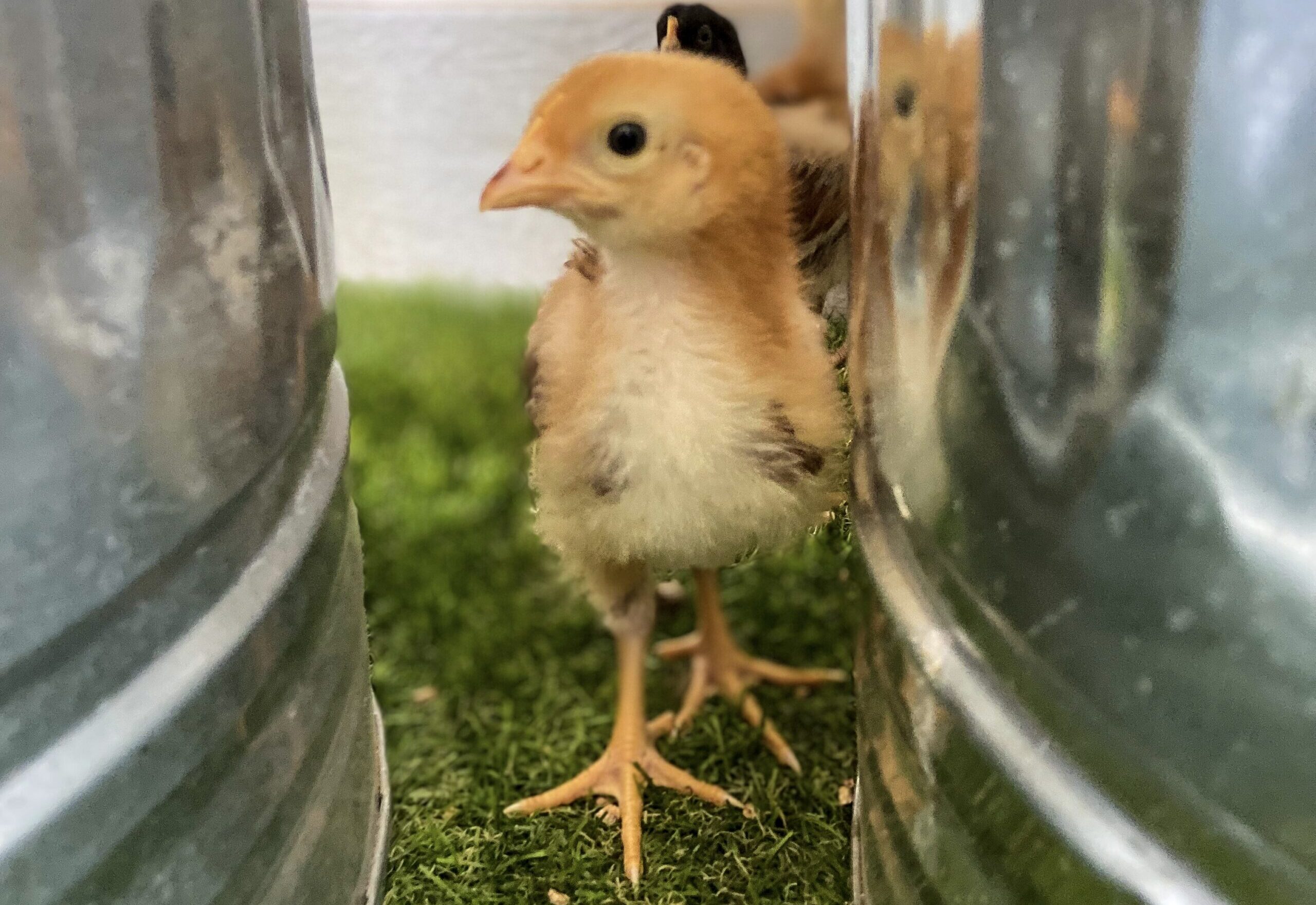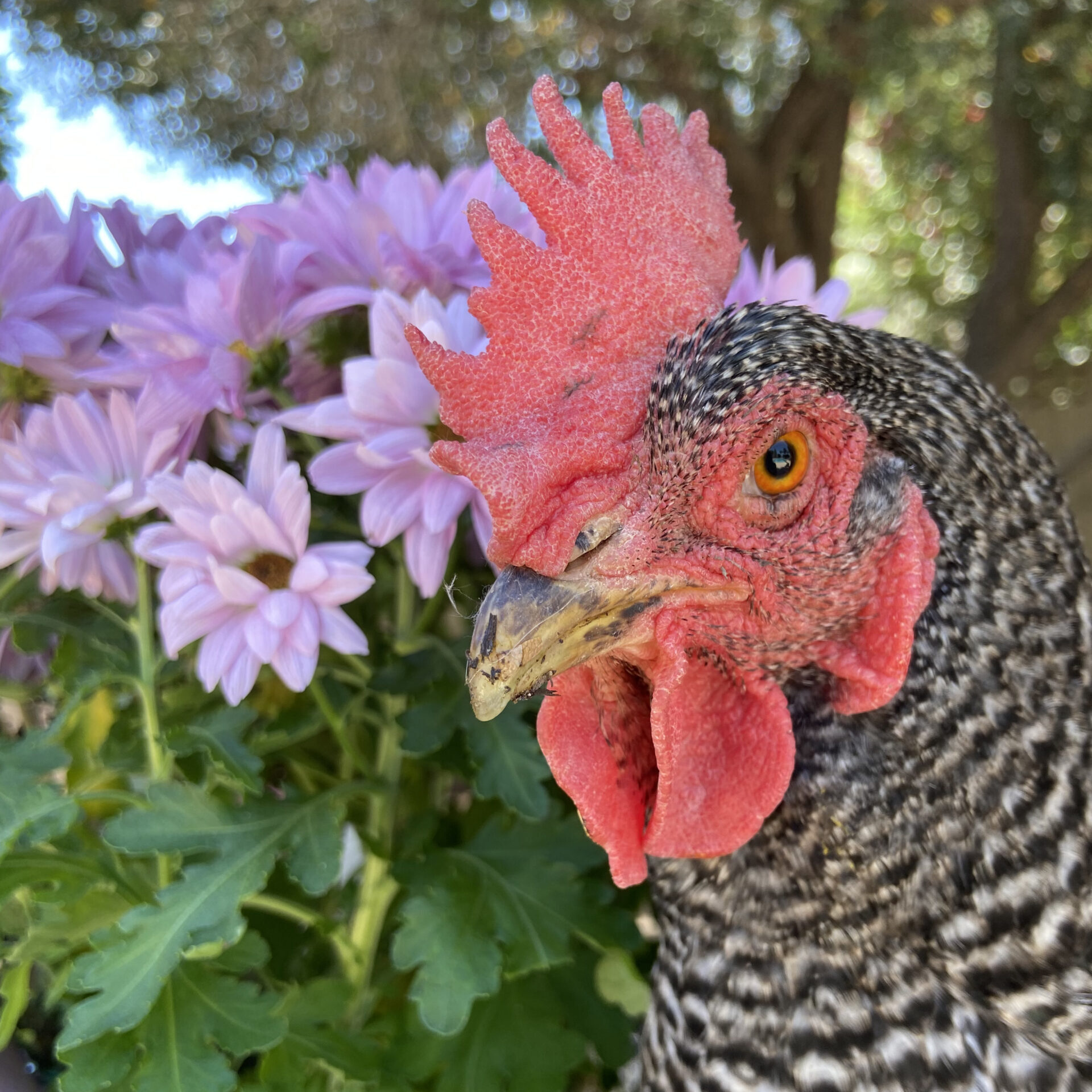Chicken Terminology
A complete list of all the terms you neeed to know to start raising chickens.
More pictures coming soon!
The below list of terms is in alphabetical order.
To quickly search this page:
PC Users: Hit “Cntrl” and “F” at the same time. A search bar will appear in the top right corner of your screen. Type the word into the search bar to find it in the list.
Mac Users: Hit “Command” and “F” at the same time. A search bar will appear in the top right corner of your screen. Type the word into the search bar to find it in the list.
After lay call (see also Egg Song)
A series of calls a hen may make after she lays an egg.
Ameraucana

American Poultry Association (APA)
The oldest livestock organization in North America with the mission to promote and protect the standard-bred poultry industry in part by publishing the American Standard of Perfection with breed and variety descriptions of all recognized/APA-approved purebred fowl.
Apron (AKA Hen Saddles)
Artificial light
Light added to a coop (usually during winter) meant to simulate longer days to stimulate egg laying.

Bantam

Banty
Barn
Bator

Beak

Beard
Bedding (AKA Litter)
Before Lay Call (see also Egg Song)
Biddy
Slang for a laying hen older than one year.
Bill Out/Beaking Out

Biosecurity
Measures taken to prevent introduction and/or spread of harmful organisms (viruses, bacteria, bugs, etc.) to your flock. Efforts include washing your hands before and after handling your chickens, washing hands after handling eggs and other chicken items, separate “coop shoes,” raising food and water off the ground, enclosed runs, frequently cleaning and disinfecting the coop and all coop related items, properly introducing pullets/new chickens to your flock and farm (quarantining new flock members for two weeks) and paying attention to local news for outbreaks of avian diseases.
Black Soldier Fly Larvae (BSL)

Bloom (AKA Cuticle)
Breed
A specific group of chickens with the same or similar appearance, behavior and characteristics that distinguish it from other chickens. Usually controlled by selective breeding.
Breeds True
Broiler Feed
Brooder
A housing unit for raising baby chicks (until about three-four months old) which includes a heat source, water, food, bedding, and excludes drafts.
Brooding
The action of a broody hen sitting and incubating eggs.
Broody
A hormone-induced behavior of a hen to sit on and incubate eggs. Hens typically do not eat or drink much in this state. This state will typically last for about 21 days if the behavior is not broken.
Broody Breaker
A wire-bottomed cage placed in a well-lit location, away from the chicken coop intended to interrupt a hen’s hormone-induced broody state for the benefit of her health and the welfare of the rest of the flock.
Broody Poop


Bumblefoot
A bacterial infection in a chicken’s foot, usually in the pad or toes, characterized by swelling and redness, usually identifiable by a black or brown scab (aka corn) on the bottom of the foot. It can appear on toes but is most common to the pad of the foot. The infection is usually caused by Staphylococcus aureus, E. coli and Pseudomonas.
Calcium
A mineral that chickens use to make eggshells. You must source an extra supply of available calcium for hens’ consumption, typically oyster shells or crushed up eggshells.
Candling
The act of holding a flashlight against an incubated eggs’ shell to see the contents inside. Typically, candling is performed on an egg before incubation to look for cracks that could allow bacteria into the egg, and after day 3 of incubation to check on chick development.
Photo credit to @dahliachicken on Instagram.
Capon
Ceca (Singular Cecum)
Two pouchlike places in a chicken’s small intestine filled with bacteria that help digest particularly woody, fibrous, or tough bits of food ingested by a chicken through fermentation. A great explanation of the ceca can be found here.


Cecal Poop
Soft, brown, usually very runny droppings with a strong odor from when a chicken empties its ceca. This type of poop is normal from a chicken and should occur daily.


Chick
A newly hatched chicken. Chickens are considered to be a “chick” until about 20 weeks old.
Chick Starter
Feed for chickens up to 6 weeks old with a high protein content (between 20-24%) which helps chicks grow strong. It is important to phase out this feed after six weeks to prevent liver damage from excess protein.
Chicken Run
A fenced, outdoor enclosure for chickens, usually attached to the chicken coop. Other common names include “pen,” “run,” and “yard.”
Cloaca
The area inside the vent through which digestive and reproductive tracts empty.


Clutch
A group of eggs in a nest.
Coccidiosis


Cock


Cockerel
A male chicken that is under a year old.
Comb
The floppy part on the top of a chicken’s head extending down to its beak. Typically, combs are larger on roosters and can come in a variety of shapes and colors, largely dependent on bread. If a comb is paler than normal, it can indicate dehydration or sickness.


Coop
Crop
Part of chicken anatomy; a small pouch located on the lower right of the chicken’s breast (you can feel a bulge when full). First stop after the esophagus, food is stored and soaked in the crop before being further digested.
Crow
Cull



Cuticle
Depopulate
Diaper
A cloth that hangs over the chicken’s vent to catch droppings. Diapers are good for house chickens but should be changed every 3-4 hours.
Diatomaceous Earth (DE)
Food grade DE is a chalk-like powder made of fossilized diatoms (single-celled alga with a cell wall made of silica, found in freshwater lakes and riverbeds). The powder acts as a mechanical insecticide (when dry) with microscopic razor-sharp edges that slice and dehydrate insects’ bodies. Only use if necessary to treat an illness (such as poultry lice), since regular exposure to DE is a health hazard to chickens (silica particles adhere to and scar lung tissue when inhaled). Safer alternatives to DE exist, such as First Saturday Lime and Sevin powder for treating poultry lice.



Drinker (AKA Waterer)
A container chickens drink water from.
Droppings Board/Catcher/Tarp
A shelf/board/tarp or some other mechanism to catch and collect chicken droppings produced overnight for easy, next-day removal.


Droppings
Chicken poop, typically made of solid digestive waste, water, and liquid waste.
Dust Bath
Chickens do not take water baths commonly, but instead take baths in dust. They coat their feathers and skin in dirt to absorb extra moisture and soil, creating a hostile environment for bugs and parasites. Safe insecticide (such as First Saturday Lime) can be added to dust baths (usually holes in the ground chickens make themselves) to prevent mite, lice, and other bug infections.
Ear Tufts
Feathers that grow from a flap of skin just below the earlobe of some Araucana chickens. Caused by a mutation in the autosomal—not sex-linked—dominate gene. Two copies of this gene are lethal to chickens.
Easter Egger
Egg Binding/Egg Bound
When an egg is stuck in a hen’s reproductive tract. THIS IS AN EMERGENCY. If your hen has not laid an egg or is having trouble laying, has a decreased appetite, is not drinking water, has a pale comb and is seen with her tail down, try feeling for an egg externally by feeling her lower abdomen (between her legs and up towards the vent) for an egg. Take your chicken to the vet immediately if you think she is eggbound as this can kill a chicken.
Egg Song


Egg Tooth
Found at the tip of a chick’s beak; the egg tooth is a hard, tooth-like structure used by a chick to break through its eggshell when hatching.
Electrolytes
False Tidbitting


Farm
Farmstead
A homestead with the focus on growing and selling items popular at market, rather than just feeding the members of the homestead. The farmstead is considered the buildings and adjacent service areas of a farm.
Feather Picking
Feed
Feeder
FLOG
Fowl
A bird of the order Galliformes that is kept for its eggs and meat. Can include chickens, ducks, turkeys, pheasants and more.
Free-Range
Frizzle
A trait (genetically determined) in multiple breeds where feathers curls backward and away from a chicken’s body.
Gizzard
Grit
Small, hard materials (sand, small pebbles, or oyster shells are common) ingested by a chicken to help break down food in the gizzard.
Grower/Pullet Feed
Feed for chickens between 6 and 20 weeks old. Has a protein content around 16-18% but has less calcium than a layer feed to try and dissuade early egg laying.


Hen
Hen House
See “Coop.”
Hock
Homestead
The home and adjoining land occupied by a family.
Homesteading
A vernacular term for a lifestyle of self-sufficiency characterized by growing and preserving your own food, and small-scale crafting to sustain a household.
Hone
The act of filing a chicken’s own beak by wiping it on hard objects to maintain its shape and length.
Impacted Crop
A blockage inside the crop preventing food from traveling from the crop to the gizzard for further digestion. Usually caused by something long and stringy (grass, long strands of lettuce, hay, baling twine, etc.) which caused other food to become trapped. This is a serious condition and must be handled immediately.
Incubation
The process of naturally hatching eggs under a chicken or with an incubator.
Juvenile
A young male or female bird.
Keel
The part of a chicken’s breastbone where the muscles attach. This can be felt by reaching your hand under your chicken (so do not be alarmed when collecting eggs!).
Layer Feed
Feed for chickens 20 weeks and older. Contains a similar protein content to grower feed (16-20%) but a higher calcium and mineral content than chick starter and grower feed to support egg production. Should not be fed to chickens before 20 weeks or before their first egg, since early egg production can lead to health problems.
Layer/Laying Hen
Lice/Poultry Lice
Little six-legged bugs that lay eggs on the feather shafts and infest chickens. These insects do not infest dogs and humans but stick to birds. Chickens may stop laying in their presence. Signs your chickens have poultry lice include pale combs and poop sticking to their feathers below the vent (stuck on egg-sacks). You can see the lice and eggs with your naked eye. Eggs will be attached to the base of the feather.
Litter
See “Bedding.”
Mash
Mealworms
Molt
The regular shedding and growth of new feathers. Typically happens on a large scale in the fall after a chicken is a year old. Hens may stop laying to devote protein to feather production. It is a good idea to increase protein intake while a chicken is molting.
Muffs
Short feathers on the sides of a chicken’s face. Muffs are often confused with ear tufts of Araucanas.
Nest Box Curtains
Material covering a nest box (like curtains) to give a laying or broody hen privacy. This discourages egg-eating and vent-picking.
Nest/Nest Box
Where chickens lay their eggs.
Nipple Drinker/Waterer
A water delivery system to chickens where instead of drinking from a troth/container, the chickens drink from a metal tube containing a ball bearing which releases water when pecked at. Although it requires a learning curve, the advantage to this kind of waterer is chickens do not contaminate water with droppings or litter.
Oviposition
Oyster Shell
Crushed up and fed to chickens as supplementary calcium to create eggshells. Chickens will eat this themselves if you just provide access to it.
Peduncle
Protruding flap of skin just below a chicken’s ear. Ear tuffs (a group of feathers) are found here on Ameraucana chickens.


Perch
Poultry
Birds raised commercially or domestically for meat, eggs, and feathers. Includes chickens, ducks, turkeys, guinea fowl, geese, and more.
Preen
A chicken’s way of grooming themselves. This is usually a group activity, so chickens can be seen huddled in groups grooming themselves or each other. They pinch the preening gland, located at the base of their tail, which releases oil they then use to coat their feathers, making them water resistant. Feathers keep chickens insulated and dry when they are upkept, so chickens need to keep their feathers in good shape.
Preening Gland (AKA Uropygial Gland)
A gland located at the base of the chicken’s tail, in front of their tail feathers that secretes a thick, transparent oil when a chicken pinches it with their beak the bird then applies to its feathers through an act called preening.
Pullet
A female chicken under a year old. Usually describes the period between when a female hen has molted into her adult feathers, but before she starts laying, typically between 15 and 22 weeks old.
Ration


Roo


Roost


Rooster
Rumpless
A chicken trait that describes the absence of a tail bone and tail. Araucanas are a rumples breed.
Saddle


Scratch
Noun: Miscellaneous grains and seeds used as a treat for your flock. This is not the same as chicken feed. Scratch can give you flock a burst of energy and keep them warm in winter months as well as lets them utilize their scratching behavior when thrown on the ground in dirt or grass.
Verb: The action of a chicken using their feet to claw at the ground to look for food, such as worms and seeds.
Sexed
Chicks that have been sorted by gender by anatomical examination within 24 hours after hatching. This is about 90% accurate within the first day (it is difficult to tell sex until chickens are older).
Sexing
The process of identifying a chicken’s gender. There are many ways to do this but it is extremely difficult to be accurate after the first day after hatch until the chicken matures and shows developmental signs of gender.
Shank
The bottom part of a chicken’s leg, above the foot.


Sickle
The pair of long, curving feathers on a full-grown rooster’s tail.
Sour Crop
A yeast infection of the crop caused by Candida albicans.
Spur
Strut
Generally the way roosters approach a hen with whom they want to mate; a tall, proud gait.
Submissive Squat
The posture a mature hen takes when approached by a rooster or when approached by a person with their hand extended. She crouches down and spreads her wings to balance and lowers her tail for the rooster to “tread” her.
Tidbitting
Treading
Vent Pecking
An abnormal behavior in chickens where one chicken will peck at another chicken’s vent, causing damage to the surrounding skin and underlying tissue. If your chicken is being picked on, isolate them, treat with an antibacterial spray or Blue-Kote and let them heal. Typically, with vent injuries you want to interrupt the hen’s egg laying cycle as not to worsen the vent’s condition. To do this, keep your chicken in a dark room for a couple days (bathrooms work great). To prevent vent pecking or other negative pecking behaviors, make sure your chickens are not crowded, have lots of enrichment activities to keep them busy, and remove hens from the flock with irritation or injury to the vent until they have healed.
Vent
The opening to the cloaca form which droppings and eggs emerge. Located under the chicken’s tail.


Waddle
Red flaps of skin located under a chicken’s beak and chin.



Waterer
See “Drinker.”



